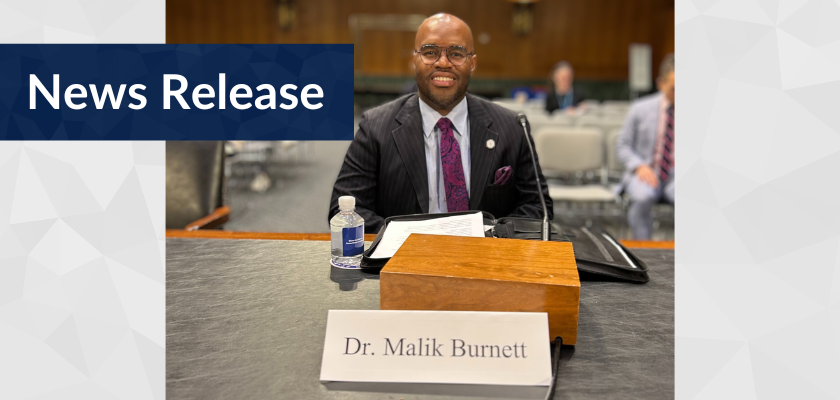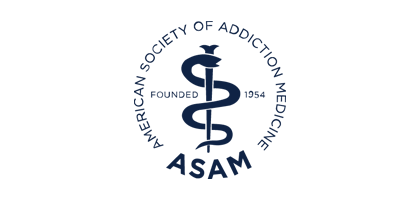Blog
Morphine Milligram Equivalents for Medications for Opioid Use Disorder (MOUD)
Background
The Centers for Disease Control and Prevention’s (CDC) Guideline for Prescribing Opioids for Chronic Pain recommends clinicians prescribe the lowest effective opioid dosage when a patient begins long-term opioid therapy for chronic pain.1 It elaborates on this recommendation as follows:
Clinicians should use caution when prescribing opioids at any dosage, should carefully reassess evidence of individual benefits and risks when considering increasing dosage to ≥50 morphine milligram equivalents (MME)/day, and should avoid increasing dosage to ≥90 MME/day or carefully justify a decision to titrate dosage to ≥90 MME/day.
CDC justifies this recommendation by noting that the benefits of high-dose, long-term opioids for chronic pain are not established, but that risks for serious harms related to opioid therapy increase at higher opioid dosage. Specifically, the Guideline notes that most experts generally agreed that increasing dosages to 50 or more MME/day increases overdose risk without necessarily adding benefits for pain control or function. Key to this recommendation is the underlying premise that opioids are being used to treat chronic pain, and accordingly, benefits were assessed in terms of chronic pain control and function and harms evaluated in terms of overdose risk.
Importantly, the benefits and risks of using opioids to treat addiction involving opioids (either methadone or buprenorphine) should be evaluated differently from the treatment of chronic pain, as chronic pain and addiction are different conditions. While both methadone and buprenorphine are indicated for the treatment of chronic pain, both have been demonstrated to reduce mortality from opioid-related overdose when used as indicated to treat addiction involving opioids. Further, both methadone and buprenorphine treatment have been demonstrated to improve outcomes, including increasing treatment retention, and reducing frequency of opioid use,2 risk behaviors that transmit HIV3 and viral hepatitis,4 criminal activity,5 and mortality.6 Increasing access to these treatment options for patients with opioid addiction has been recommended as a key strategy to reduce opioid overdose deaths.7
Equally as important, recommended dosages of methadone and buprenorphine when used to treat addiction involving opioids differ from recommended dosages for chronic pain treatment. The ASAM National Practice Guideline for the Treatment of Opioid Use Disorder - 2020 Focused Update notes that, while a relatively low dose of methadone (e.g., <30 mg per day) can lessen acute opioid withdrawal, it is often not effective in suppressing craving and blocking the effects of other opioids.8 Most patients fare better if their initial 10-30 mg per day dose is gradually raised to a maintenance level of 60–120 mg per day. Indeed, multiple randomized trials have found that patients have better outcomes, including retention in treatment, with higher methadone doses (80–100 mg per day) than lower doses.
Regarding buprenorphine, the ASAM Guideline recommends that while initiation of buprenorphine should start with doses of 2–4 mg, 16 mg per day or more may be more effective than lower doses after initiation of treatment.
Converting the recommended dosages of methadone to morphine milligram equivalents (MME) reveals that doses for the treatment of addiction involving opioids typically exceed the CDC recommendations regarding MME for chronic pain. The range of 60-120 mg of methadone per day becomes 600–1,440 MME.9 CDC specifically excludes buprenorphine, a partial opioid agonist, from its MME table, because it is not likely to be associated with overdose in the same dose-dependent manner as are full opioid agonists.10
This difference in doses of methadone and buprenorphine used to treat addiction and opioids used to treat pain may cause confusion among policymakers and payers attempting to set policies to prevent opioid overdose by limiting MME, as well as among state medical board officials attempting to enforce clinical guidelines and stem the over-prescription of opioid analgesics. Furthermore, applying the CDC-recommended MME thresholds to methadone and buprenorphine when used to treat addiction is problematic. Given its stated scope, the CDC Guideline recommendations were not intended to apply to these medications when used to treat addiction involving opioids. Its recommended thresholds conflict with methadone’s and buprenorphine’s clinically recommended dosages. Applying MME thresholds designed to minimize overdose-related harm caused by opioids prescribed for chronic pain to opioids used for addiction treatment would have a perverse effect of limiting addiction treatment effectiveness and potentially increasing opioid overdose deaths.
Recommendations
Considering these facts, the American Society of Addiction Medicine recommends:
1. Methadone used for the treatment of addiction involving opioids should be explicitly excluded from morphine milligram equivalents (MME) calculations for purposes of legislation, regulations, state medical board guidelines, prescription drug monitoring programs, electronic medical records, and payer policies that attempt to reduce opioid overdose-related mortality by limiting or otherwise restricting MME. Higher MME of methadone can be necessary and clinically indicated for the effective treatment of addiction involving opioids in contrast to methadone used for the treatment of chronic pain. Buprenorphine, regardless of indication, should be excluded from MME calculations because it is not likely to be associated with overdose in the same dose-dependent manner as are full opioid agonists.
2. State medical boards should not use MME conversions of methadone or buprenorphine dosages used for addiction treatment as the basis for disciplinary actions against prescribers.
Adopted by the ASAM Board of Directors October 2016, revised December 16, 2021
© Copyright 2021. American Society of Addiction Medicine, Inc. All rights reserved. Permission to make digital or hard copies of this work for personal or classroom use is granted without fee provided that copies are not made or distributed for commercial, advertising or promotional purposes, and that copies bear this notice and the full citation on the first page. Republication, systematic reproduction, posting in electronic form on servers, redistribution to lists, or other uses of this material require prior specific written permission or license from the Society. ASAM Public Policy Statements normally may be referenced in their entirety only without editing or paraphrasing, and with proper attribution to the society. Excerpting any statement for any purpose requires specific written permission from the Society. Public Policy statements of ASAM are revised on a regular basis; therefore, those wishing to utilize this document must ensure that it is the most current position of ASAM on the topic addressed.
References
1. Dowell D, Haegerich TM, Chou R. CDC Guideline for Prescribing Opioids for Chronic Pain — United States, 2016. MMWR Recomm Rep 2016;65(No. RR-1):1–49. DOI: http://dx.doi.org/10.15585/mmwr.rr6501e1
2. American Society of Addiction Medicine, Treatment Research Institute. (2013). FDA Approved Medications for the Treatment of Opiate Dependence: Literature Reviews on Effectiveness and Cost-Effectiveness. Chevy Chase, MD: American Society of Addiction Medicine. Available at https://bit.ly/AAAM2013Report
3. Bruce RD. Methadone as HIV prevention: high volume methadone sites to decrease HIV incidence rates in resource-limited settings. Int J Drug Policy. 2010;21(2):122-4.
4. Tsui JI, Evans JL, Lum PJ, Hahn JA, Page K. Association of opioid agonist therapy with lower incidence of hepatitis C virus infection in young adult injection drug users. JAMA Intern Med. 2014;174(12):1974---1981.
5. Perry Ae, Neilson M, Martyn-St James M, Glanville JM, McCool R, Duffy S, et al. Pharmacological interventions for drug-using offenders. Cochrane Database Syst Rev. 2013;12:CD010862.
6. Schwartz RP, Gryczynski J, O’Grady Ke, Sharfstein JM, Warren G, Olsen Y, et al. Opioid agonist treatments and heroin overdose deaths in Baltimore, Maryland, 1995-2009. Am J Public Health. 2013;103(5):917-22.
7. Hawk KF, Vaca FE, and D’Onofrio G. Reducing Fatal Opioid Overdose: Prevention, Treatment and Harm Reduction Strategies. Yale Journal of Biology and Medicine. 2015; 88:235-245
8. American Society of Addiction Medicine (ASAM). The ASAM National Practice Guideline for the Treatment of Opioid Use Disorder: 2020 Focused Update. December 2019. Available at: https://www.asam.org/docs/default-source/quality-science/npg-jam-supplement.pdf?sfvrsn=a00a52c2_2
9. Centers for Disease Control and Prevention (CDC). Calculating Total Daily Dosage of Opioids for Safer Dosage. Available at: https://www.cdc.gov/drugoverdose/pdf/calculating_total_daily_dose-a.pdf
10. Houry D. Director, National Center for Injury Prevention and Control, Centers for Disease Control and Prevention. Letter to ASAM. https://www.asam.org/docs/default-source/advocacy/letters-and-comments/2018-1-4-letter-on-buprenorphine-and-cdcs-guideline-(002).pdf?sfvrsn=7fa840c2_2. Dated January 4, 2018. Accessed September 23, 2021.


